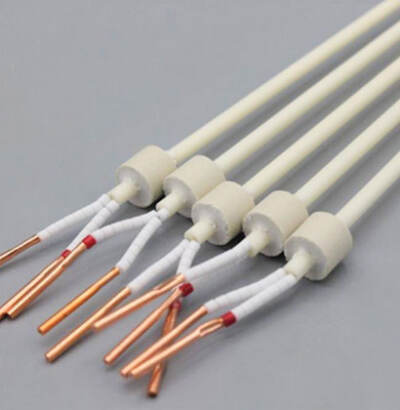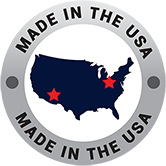6 Causes of Thermocouple Measurement Errors—and How to Prevent Them
Thermocouples are essential tools in temperature measurement, especially in industries where precision is tied directly to safety, efficiency, or product quality. Sectors like aerospace, power generation, metal processing, and heat treatment rely on accurate thermal data to maintain critical process parameters.
At a glance, thermocouples seem simple: two dissimilar metal wires joined at a junction, generating a voltage that correlates to temperature via the Seebeck effect. But this simplicity hides the potential for significant errors in real-world conditions.
Factors like installation errors, material inconsistencies, environmental influences, and component aging can all undermine thermocouple performance. Even small inaccuracies can lead to out-of-spec parts, wasted energy, or compromised system integrity.
Understanding the common causes of thermocouple measurement errors—and how to prevent them—is the first step in ensuring your temperature data remains dependable over time.
#1: Selecting the Wrong Thermocouple Type or Transmitter Settings
One of the most common—and easily avoidable—errors in thermocouple measurement comes from selecting the wrong thermocouple type on the transmitter or control device. With multiple thermocouple types available (each with different characteristics), mismatches in configuration can produce completely inaccurate readings.
Common Thermocouple Types:
- Type K – General-purpose, high-temperature (oxidizing environments)
- Type J – Lower range, iron-based, used in inert/reducing atmospheres
- Type N – High stability in high heat; better oxidation resistance than Type K
- Types R, S, B – Platinum-based, ideal for extremely high temperatures
- Types T, E – Cryogenic and lab applications
Prevention: Always verify that your transmitter or control system is configured for the exact thermocouple type you’re installing. Double-check documentation and consider color-coding or labeling systems to prevent future confusion during maintenance.
#2: Polarity and Extension Wire Errors
Polarity issues are another frequent source of thermocouple measurement error—especially during installation. Unlike typical electrical wiring, thermocouple standards assign the negative signal to the red wire (per ANSI color coding), which is the opposite of most wiring systems. Reversing the positive and negative leads causes incorrect temperature readings, often by the full difference between junctions.
Extension wires must also match the thermocouple type exactly—both in material and polarity. A mismatch can introduce unintended EMFs and signal distortion.

Prevention: Use clearly marked leads and ensure all extension wire materials match your thermocouple type specifications. Maintain detailed wiring documentation and provide proper training for installation teams to avoid polarity mistakes.
CEL helps prevent these errors by clearly marking all leads and ensuring extension wire materials meet tight tolerances. Our customers also benefit from comprehensive installation documentation and on-site support when needed.
#3: Alloy Variability and Thermocouple Tolerances
Thermocouples rely on precise metallurgical composition to maintain accuracy. However, even slight variations in alloy percentages—common during wire production—can introduce inconsistencies in performance. Standard-grade thermocouples may vary by ±2.2°C (±4°F) or more, which could be unacceptable in precision-driven industries.
Prevention: For critical applications, specify special limit of error (SLE) thermocouples made from tightly controlled, high-purity alloys. These sensors are engineered to reduce deviation and maintain tighter tolerances, especially in high-temperature or cyclic applications. Additionally, ensure each sensor meets performance criteria through proper calibration before installation.
CEL Advantage: Our ISO/IEC 17025-accredited calibration lab ensures each sensor meets exacting performance criteria before delivery. CEL’s SLE thermocouples are made from premium, tightly controlled alloys that maintain accuracy even in demanding applications. Learn more about our precision thermocouple calibration services.
#4: Environmental Interference at the Reference Junction
A thermocouple doesn’t measure absolute temperature—it measures the difference between the hot (measuring) junction and the cold (reference) junction. Temperature fluctuations near the reference junction can introduce serious measurement errors.
Even minor influences—like nearby cooling fans, drafts, heat sources, or direct sunlight—can distort the reference junction temperature, skewing the entire system’s reading.
Prevention: Protect reference junctions through proper insulation and controlled environments. Consider using integrated temperature compensation or remote transmitters with cold junction compensation circuitry for installations in extreme conditions. Fiber-optic sensors can also eliminate reference junction issues entirely in challenging environments.
#5: Ground Loops and Multiple Grounds
Thermocouples must be grounded properly—but grounding at more than one point can cause serious problems. When a thermocouple is grounded at both the transmitter and the controller, it creates a ground loop—a condition where electrical current circulates through the thermocouple circuit.
This loop introduces noise, voltage fluctuations, and electromagnetic interference (EMI), leading to unstable or inaccurate readings.
Prevention Steps:
- Ground thermocouples at only one point in the circuit
- Use internally isolated transmitters to reduce EMI risk
- Install loop isolators for sensitive applications
- Audit existing wiring layouts before adding new sensors
- Maintain proper documentation of grounding schemes
#6: Thermocouple Drift and Aging Over Time
Over time, even the most well-made thermocouples degrade. Exposure to high temperatures, oxidation, thermal cycling, and environmental contaminants causes metallurgical changes in the thermocouple wires. The result is drift—a gradual shift in readings, often downward, that can’t be recalibrated or corrected.
Unfortunately, drift is unpredictable. In harsh conditions, it can occur faster than expected, leading to errors of 10–20°F or more.
Prevention Strategies:
- Use premium, heat-resistant alloys to slow degradation
- Specify sheathed and compacted designs to shield sensing elements
- Consider platinum-based thermocouples (Types S, R, B) for extended high-temperature performance
- Implement lifecycle management programs with scheduled replacements
- Monitor trending data to identify drift patterns before they become critical
CEL combats thermocouple aging through premium alloys, protective sheathing designs, and our Precious Metal Exchange Program that reduces replacement costs on high-value thermocouples. Our lifecycle management guidance helps you replace sensors before critical failures occur.
In critical operations, replacing aging sensors before failure is not just maintenance—it’s prevention.
Built for Accuracy: CEL’s Approach to Thermocouple Reliability
Cleveland Electric Laboratories has built its reputation on delivering exceptionally accurate and reliable thermocouples—even in the most extreme industrial environments. Where many manufacturers provide off-the-shelf options, CEL engineers every sensor for the specific temperature range, cycle frequency, atmosphere, and physical constraints of your application.
Why Choose CEL?
- ISO/IEC 17025, ISO 9001, and AS9100D certified processes
- Custom calibration for each sensor, not just batch testing
- Sheathed, high-temperature thermocouple designs built for longevity
- Industry expertise in aerospace, power generation, heat treatment, and more
- Engineering support from concept to field installation
From avoiding ground loops to mitigating drift, CEL ensures every aspect of your thermocouple system works together—accurately, efficiently, and consistently. Because in high-stakes environments, precision isn’t a luxury—it’s a necessity.



